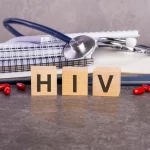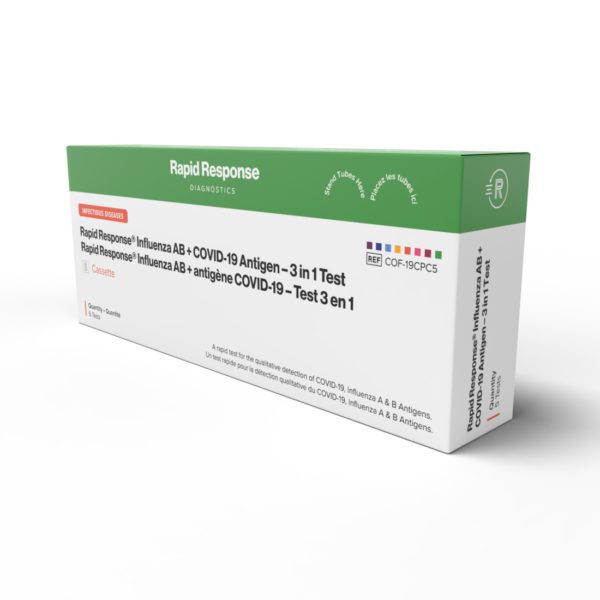The COVID-19 pandemic has brought forth numerous challenges, including the emergence of various SARS-CoV-2 variants. These variants have raised questions about their impact on public health, transmission rates and the efficacy of existing preventive measures.
In this comprehensive blog post, we will discuss the world of COVID variants, shedding light on their discovery, infectious rates, and other essential details. From the Omicron variant to Delta and its subvariants, Beta, Alpha, Epsilon, Eta, Iota, Kappa, Zeta and Mu, we explore the diverse landscape of SARS-CoV-2 mutations.
Types of COVID variants
SARS-CoV-2, the virus that causes COVID-19, is a highly mutating virus.
Over the years, the World Health Organization (WHO) reported numerous variants and subvariants, including the following:
Omicron and its subvariants
The Omicron variant of SARS-CoV-2 gained significant attention when first identified in late 2021. This variant carries numerous mutations in the spike protein, which raised concerns about its potential impact on transmissibility and disease severity.
Omicron is known for its high number of spike protein mutations, which may allow it to evade specific immune responses and potentially increase its ability to infect individuals who have previously been infected or vaccinated.
As the scientific community continues to study Omicron infection, subvariants of this variant have also been identified. These new variants are distinct strains that share similarities with the Omicron variant but may have unique sets of mutations.
According to the WHO, Omicron is the dominant variant observed since 2022, and they were able to identify numerous subvariants, much more than they discovered with other variants.
These subvariants come from these parent lineages:
- 1
- 2
- 4
- 5
Currently recognized variants of interest
COVID-19 strains XBB. 1.5 and XBB. 1.16 that descends from the Omicron variant are the currently recognized variants of interest by the WHO as of June 05, 2023.
Currently recognized variants under monitoring
These strains, which all stem from the Omicron variant are the virus variants currently considered variants under monitoring (VUMs) as of May 17, 2023:
- 2.75
- 1.1
- 1
- XBB
- 1.9.1
- 1.9.2
- 1.9.3
While all these are concerning, some omicron variants, such as the BA.5, are more likely to cause less severe disease than other variants of concern.
Delta
The Delta variant, also known as B.1.617.2, is a highly transmissible variant of the SARS-CoV-2 virus that causes Coronavirus disease. It was first identified in late 2020 in India and has since spread to numerous countries, becoming a dominant strain in many regions. The Delta variant has garnered significant attention due to its increased transmissibility compared to earlier virus strains.
The Delta variant is known to be highly contagious, with research suggesting that this variant spreads more easily from person to person compared to previous variants. It’s estimated to be up to 60% more transmissible than the Alpha variant, which was more spreadable than the original strain of the virus.
This coronavirus variant has been associated with an increased risk of hospitalization and severe illness. Studies have indicated that individuals infected with the Delta variant are more likely to require hospitalization than those infected with earlier strains.
The variant is also linked to a higher risk of developing severe respiratory symptoms, especially among previously infected and unvaccinated individuals.
Although breakthrough infections can occur, vaccines have shown effects in preventing severe disease, hospitalization and death. However, some studies suggest that the Delta variant may be less susceptible to vaccine-induced immunity than earlier strains.
Delta AY.4.2*
Delta AY.4.2 is a lineage of the Delta variant and is also called “Delta Plus.” During mid-October 2021, the AY.4.2 Delta sublineage was expanded in England, and it was closely monitored and assessed.
This sublineage possesses spike protein mutations, namely A222V and Y145H, although they’re not considered to be of significant concern. Some experts have suggested that AY.4.2 might be around 10-15% more transmissible than the original Delta variant.
At that time, AY.4.2 accounted for approximately 10% of the cases, leading to an additional growth rate of about 1% (10% of 10%) every five days.
The symptoms of this infection resemble a bad cold, and people tend to overlook the need for isolation and testing, which also affects disease control and infection prevention.

Beta
The Beta variant, also known as B.1.351, is a strain of the SARS-CoV-2 virus that causes COVID-19. It was first identified in late 2020 in South Africa and has since been detected in various countries worldwide.
While not as highly transmissible as the Delta variant, the Beta variant has shown an ability to spread more easily than the original strain of SARS-CoV-2.
One of the major concerns surrounding the Beta variant is its potential to show immune escape and reduce the effectiveness of certain COVID-19 vaccines. Studies have suggested that the variant may be less susceptible to neutralization by antibodies generated through vaccination or prior infection.
Vaccines protect against severe disease, hospitalization and death, even in the Beta variant.
Alpha
The Alpha variant of SARS-CoV-2 (B.1.1.7), first identified in the United Kingdom, is highly transmissible and has spread to numerous countries. While it’s more contagious than earlier strains, current evidence suggests it doesn’t cause more severe disease than other Coronavirus variants.
COVID-19 vaccines remain effective against the Alpha variant, and public health measures remain crucial in controlling its spread.
Epsilon
The Epsilon variant of SARS-CoV-2, also known as B.1.427/B.1.429, is a strain of the virus that causes COVID-19. It was first identified in California, United States, in early 2021. The Epsilon variant has garnered attention due to its specific mutations in the spike protein, which may impact its transmissibility and potential evasion from the immune system.
Studies have suggested that the Epsilon variant is more transmissible than earlier strains of the virus but not as transmissible as some of the more concerning circulating variants, such as Delta.
Eta
The Eta variant, also known as lineage B.1.525 or VUI-21FEB-03, is another variant of the SARS-CoV-2 virus. Unlike the Alpha, Beta, and Gamma variants, Eta doesn’t carry the N501Y mutation. However, it shares the E484K mutation with these variants:
- Gamma
- Zeta
- Beta
Eta also has the same deletion found in the Alpha variant and the N439K and Y453F mutations found in the B.1.141, B.1.258, and Cluster 5 variants.
Iota
The Iota variant, also known as lineage B.1.526, is a variant of SARS-CoV-2 and was first identified in New York City in November 2020. This variant carries two significant mutations: the E484K spike mutation, which may help the virus evade antibodies, and the S477N mutation, which enhances its binding to human cells.
By February 2021, the Iota variant had rapidly spread in the New York region, representing approximately one in four viral sequences. As of April 11, 2021, it had been detected in at least 48 U.S. states and 18 countries.
According to the WHO’s simplified naming scheme, B.1.526 has been designated the Iota variant. It is currently classified as a variant of interest (VOI) but not yet a variant of concern.
Kappa
The Kappa variant, also known as lineage B.1.617.1, is a Pango lineage B.1.617 sublineage. It was initially identified in India in December 2020. By the end of March 2021, the Kappa sub-variant had become predominant, representing over half of the submitted sequences from India. On April 01, 2021, it was designated as a Variant Under Investigation (VUI-21APR-01) by Public Health England.
Zeta
The Zeta variant, also known as lineage P.2, is a variant of SARS-CoV-2, the virus responsible for COVID-19. It was first detected in Rio de Janeiro and carried the E484K mutation but not the N501Y and K417T mutations. Notably, it evolved independently in Rio de Janeiro and is not directly related to the Gamma variant from Manaus.
According to the simplified naming scheme proposed by the WHO, lineage P.2 was designated as the “Zeta variant” and was initially classified as a variant of interest (VOI) but not a variant of concern.
In November 2020, an increase in the prevalence of the Zeta variant was observed among genetic sequences from the São Paulo state, preceding a second wave of infections. However, as of July 2021, the Zeta variant is no longer considered a variant of interest by the WHO.
Mu
The Mu variant, also known as lineage B.1.621 or VUI-21JUL-1, was initially identified in Colombia in January 2021 and was classified as a variant of interest by the WHO on August 30, 2021. The Mu variant carries specific mutations that raise concerns about potential resistance to existing vaccines, emphasizing the need for further research and understanding.
Outbreaks of the Mu variant have been reported in South America and Europe. Within the B.1.621 lineage, a sublineage referred to as B.1.621.1 is identified using the PANGO nomenclature. This sublineage has already been detected in more than 20 countries worldwide.
Current SARSCoV-2 variant tracking
According to European Centre for Disease Prevention and Control, Omicron subvariants are the only circulating variants.
They de-escalated previous variants and older omicron subvariants, including:
- Alpha
- Epsilon
- Eta
- Kappa
- Iota
- Zeta
- Mu
- Beta
- Gamma
- Delta
Despite this, the emergence of a new variant is always possible, and your vaccination status is a great way to prevent future risks of getting these infectious diseases.






















































